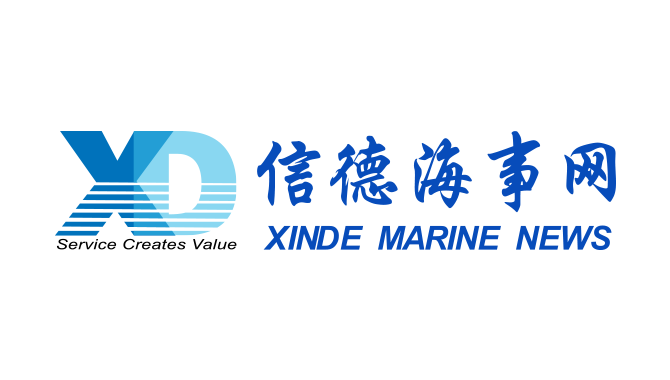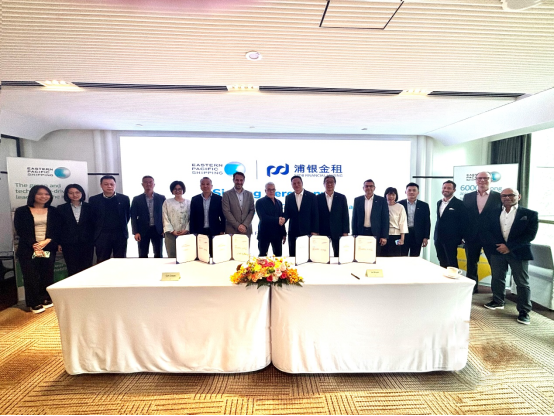
On a chilly Wednesday morning, hundreds of trucks loaded with multi-colored containers queue in front of a 363-meter-long ship docked at a terminal at the Qingdao port, East China's Shandong Province, forming a line that stretches for more than 200 meters.
A look upward reveals seven-meter-long automated bridge cranes loading containers onto the mega-sized ship in an orderly manner. The cargo handling procedure is set to be completed within about 10 hours, after which the container vessel will embark on its intended route, heading to Central and South America with China-made manufacturing products and raw materials on board.
Huang Xiangdong, a manager at the terminal, busily moved among the fleet of trucks and guides the traffic flow through an intercom. To him, a crowded port is a normal scene this year, as there are around 30,000 container trailers moving across the terminal everyday; nearly a peak of sorts.
"I don't really feel the so-called export dive in the first two months. Truck flow was almost the same as it was in 2022, and there's even been steady single-digit growth," Hung told the Global Times.
As China, the world's largest manufacturing powerhouse, revs up its economic engines after the conclusion of the Spring Festival holidays, certain Western doomsayers have been making kneejerk exaggerations about headwinds faced by China's foreign trade, citing "piled containers" as indicative of overseas order freeze that could cloud the growth prospect of the world's second-largest economy this year.
But the hustle and bustle at the Qingdao port, China's fourth-largest port in terms of cargo handling ability, offers an unmistakable and resounding sign that mirrors the vigor and resilience of the country's trade sector, despite a global economic downturn.
Industry insiders pointed out that the claimed "idle" containers at the port are just part of a "normal market adjustment" as there has been a glut in containers at the port after global supply chains saw a return to normalcy at the beginning of the year.
Throughout 2023, Chinese port authorities and traders have acknowledged immense downward pressure, yet they all voice optimism about the future, vowing a "full-throttle mode" that analysts said is set to channel a new dynamic to propel global growth.
Rebutting 'idle container' hypes
Driving across the Qingdao port, the Global Times reporters noticed several stacks of empty containers in the container yards outside the terminal. An employee at the terminal told the Global Times on Wednesday that a number of stockpiled containers have been put into use since February, after returning from the Spring Festival holidays, and the pile-up has been drastically reduced to date.
"In fact, [the stockpile] is totally market-driven, and it has nothing to do with what some media sources claimed was a drastic dip in the export business," Su Zongyang, a vice general manager of the combined transportation center under the Shandong Port Land-Sea International Logistics Group, told the Global Times on Tuesday.
According to Su, in the past three years of epidemic outbreak when supply chain was fractured, China had been the key supplier of the world and global shipping companies were all heading toward China to ferry goods, which led to a sudden spike in container demands in the country.
Also, due to skyrocketing shipping rate and lingering port congestion in Europe and the US, most global shipping companies prioritize efficiency to pocket as much profit as possible, choosing to return to China without containers as they cannot wait the lengthy time of containers offloading and reloading, which also exacerbated the container supply shortage. As such, containers were churning out in bulk to meet the soaring demands.
"As global production stabilizes this year, it is reasonable that containers are oversupplied, and some of them return to Chinese ports this year based on universal shipping rules, as China is the place where vast container vessels departed," Su noted.
Also, compared with fees charged by ports in Europe and the US in placing idle containers, those at Chinese ports are more "competitive" in prices and some of them also provide additional discounts if the cargo throughput of shipping firms "reaches a certain level," another draw to shipping companies, according to Huang.
In Ningbo's Zhoushan port, the world's largest port in terms of annual throughput in East China's Zhejiang Province, empty containers are kept within a "reasonable level" and do not affect the normal operation of the port, Leng Zhiqiang, director of the container center at the port, told the Global Times.
Leng said the port has anticipated the backflow of empty containers into Chinese ports, and therefore contacted foreign trade firms in advance to divert the flow.
A flurry of data from Chinese ports would also be sufficient to silence Western scaremongers.
According to Leng, the container business at Zhoushan port slightly increased in January compared with the same period in 2022. And Leng expected that the containers shipped by sea-railway combined transportation will see a two-digit growth in February.
"We're also in dire need of truck drivers as the terminal dispatches about 30,000 trailers every day, an immense workload amid steady momentum in foreign trade," Huang said.
In January, the cargo throughput in Shandong ports soared by 5.3 percent year-on-year to 143 million tons.
A more bustling year
The January-February period is traditionally a slow season in foreign trade, but industry insiders said that the growth during the first two months has been surprisingly in an upward streak, which, combined with the dividends from China's reopening, has given some of the industry players high hopes about a more prosperous year in 2023.
Duan Lianmin, a manager at a Shenzhen-based glass factory, told the Global Times on Wednesday that while she has adopted a sober understanding of the grim global trade situation as a result of softening global demand, rising geopolitical tensions and lingering inflation, the company's business in the first two months has yet to show signs of being impacted.
"We plan to participate in an industry exhibition in the mid-year. As China reopens, a number of foreign clients will fly in to join the exhibition for the first time in three years," Duan said, indicating that she will seize the opportunity to develop new customers. Currently, her company's main customers are in Southeast Asia, the Middle East, India, and South Africa.
Late on Tuesday night, the lights were still on at the Qingdao port, which runs 24 hours a day seven days a week, illuminating a banner which reads "do what you do the best and strive for the first," a slogan which sheds light on the fighting spirit of thousands of port employees like Huang and Su, as well as traders and government officials across the country.
The Global Times learned that authorities in Shandong, as well as other major manufacturing bases, have also been organizing chartered flights to Southeast Asia, Europe, Japan and South Korea since late December 2022, helping local foreign trading firms snap up more overseas orders. Such trips have achieved fruitful results.
While the export sector works in full swing, economists expect a strong rebound in the imports sector, as the optimization of COVID-19 regulations will drive up internal demand. And the recovery of the Chinese economy will also provide strong momentum for global economic recovery, which will boost cross-border investment and trade as well, analysts said.
Source: Global Times
The opinions expressed herein are the author's and not necessarily those of The Xinde Marine News.
Please Contact Us at:
media@xindemarine.com


 China’s First Bulk Bunkering of Domestic Green Me
China’s First Bulk Bunkering of Domestic Green Me  Rotterdam and Singapore Strengthen Collaboration on
Rotterdam and Singapore Strengthen Collaboration on  MPA and CMA CGM Sign MoU to Enhance Sustainable Shi
MPA and CMA CGM Sign MoU to Enhance Sustainable Shi  China's Ports Surge Ahead: Major Container Terminal
China's Ports Surge Ahead: Major Container Terminal  Port of Hamburg: Growth in container throughput and
Port of Hamburg: Growth in container throughput and  EPS and SPDB Financial Leasing sign financing agree
EPS and SPDB Financial Leasing sign financing agree